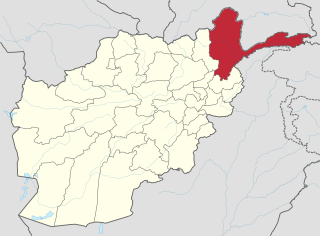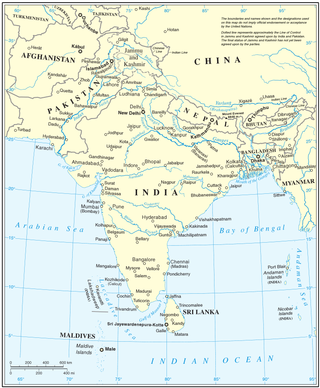
Samangan is one of the thirty-four provinces of Afghanistan, located north of the Hindu Kush mountains in the central part of the country. The province covers 11,218 square kilometres (4,331 sq mi) and is surrounded by Sar-e Pol Province in the west, Balkh in the north, Baghlan in the east, and Bamyan in the south.
The following lists events that happened during 2004 in Afghanistan.

Spera District is situated in the most southwestern part of Khost Province, Afghanistan. It borders with Paktia Province to the south and west, Shamal District to the north. The district is within the heartland of the Zadran tribe of Pashtuns. To the east it borders Nadir Shah Kot and Tani districts as well as Khyber Pakhtunkhwa in Pakistan. The population of Spera District is around 21,500 people. The district center is the village of Spera, situated in the central part of the district.
An earthquake occurred in northern Afghanistan on 30 May 1998, at 06:22 UTC in Takhar Province with a moment magnitude of 6.5 and a maximum modified Mercalli intensity of VII. At the time, the Afghan Civil War was underway; the affected area was controlled by the United Islamic Front for the Salvation of Afghanistan.

The global weather activity of 2010 includes major meteorological events in the Earth's atmosphere during the year, including winter storms, hailstorms, out of season monsoon rain storms, extratropical cyclones, gales, microbursts, flooding, rainstorms, tropical cyclones, and other severe weather events.
On March 4, 2012, at least three avalanches struck the Badakhshan province of northeastern Afghanistan. One of those avalanches destroyed a small village of about 200 people. The name of the village is uncertain; some sources call it Dasty and locate it in Darzab District, and others call it Sherin Nazim and locate it in Shekay District. Two other villages were affected by the avalanche. At least 50 people were killed in the disaster.

On 2 May 2014, a pair of mudslides occurred in Argo District, Badakhshan Province, Afghanistan. The death toll is uncertain, the number of deaths varying from 350 to 2,700. Around 300 houses were buried and over 14,000 were affected. Rescuers responding to the initial mudslide were struck by a second mudslide, which further hampered rescue efforts.
The following lists events from 2014 in Afghanistan.
The following lists events that happened during 2016 in Afghanistan.
Events in the year 2018 in Afghanistan.
Events from the year 2019 in Afghanistan.

The Islamic State–Taliban conflict is an ongoing armed conflict between the Islamic State and the Taliban in Afghanistan. The conflict escalated when militants who were affiliated with Islamic State – Khorasan Province killed Abdul Ghani, a senior Taliban commander in Logar province on 2 February 2015. Since then, the Taliban and IS-KP have engaged in clashes over the control of territory, mostly in eastern Afghanistan, but clashes have also occurred between the Taliban and IS-KP cells which are located in the north-west and south-west.
Events in the year 2020 in Afghanistan.
In June 2020, insurgents and the Taliban carried out attacks throughout Afghanistan in a continuation of attacks carried out in May.
The 1991 Hindu Kush earthquake occurred northeast of Kabul, Afghanistan on February 1, 1991. It was an intermediate-depth earthquake with a hypocenter 142.4 km beneath the Hindu Kush mountains. It measured 6.9 on the moment magnitude scale, and affected neighbouring Pakistan and the USSR. At least 848 people were killed in both countries and damage was estimated at $26 million USD.

Throughout 2022, floods affected most of Africa, killing over 2,100 people. The worst affected country was Nigeria, with over 610 deaths.

From January to October 2022, excessive rainfall and widespread monsoon flooding occurred in the South Asian countries of Afghanistan, Bangladesh, India, Nepal, Pakistan, and Sri Lanka. It has become the region's deadliest floods since 2020, with over 3,700 people dead.
Events in the year 2023 in Afghanistan.







